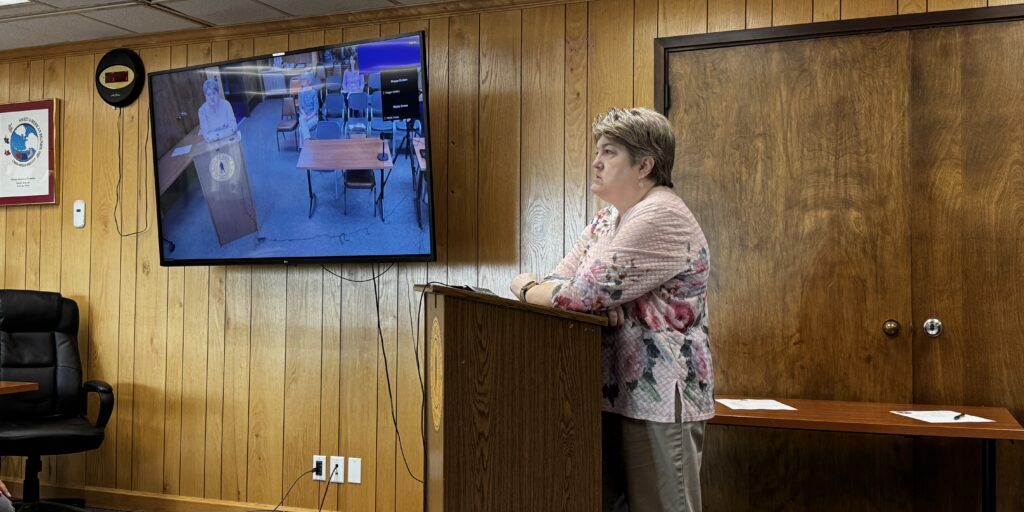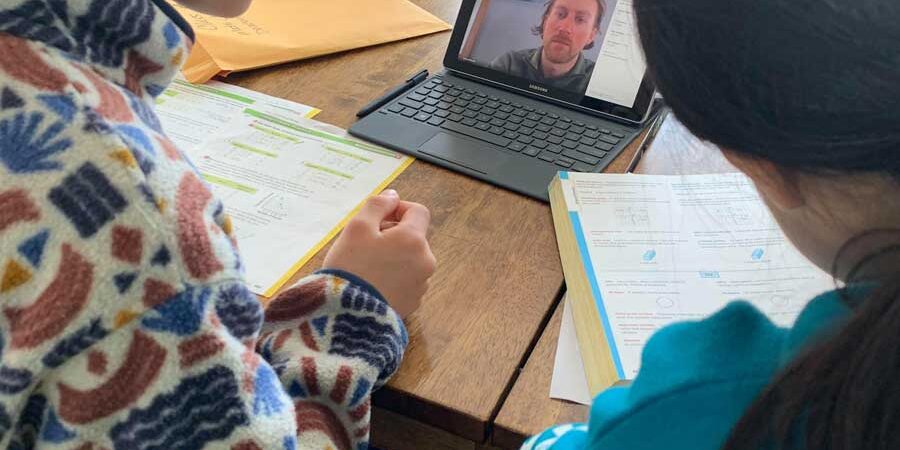School districts in Western Alaska are trying to be creative in providing online instruction in an area where internet access is limited. There’s legal wording in one federal program that’s challenging a way Nome Public Schools could provide broadband internet to their students.
Every Nome Public Schools student in the third grade and up has access to a school laptop or tablet that they can take home. But once they’re at home, many of those devices have nothing to connect to.
Affordable high-speed internet is a tool many families in Nome struggle to access.
That’s just one more challenge for Jim Shreve, the Technology Director for Nome Schools. His job requires him to be ready to put the entire district online at just a moment’s notice.
“What we’re wanting to do is get internet hotspots pushed out [or] either mount a large antenna out on the elementary school to where we can have– let’s just call it our own LTE network– and be able to broadcast our signal to little receivers that would go home with their computers to the students.”
– Jim Shreve
But here’s the catch: for a school like Nome that is technically illegal.
Nome Public Schools currently has high-speed broadband within school buildings. 90% of the NPS district’s broadband is funded by a federal program for low-income schools operated through the Federal Communications Commission (FCC). Nome’s Superintendent Jamie Burgess explains the law only allows that funding for district internet to be used in the classroom.
“For example, here in our district office building we have our Anvil City Science Academy Charter School but at the other end of our building we have our teacher/guest housing dormitories and our access point cannot reach out into that residential housing.”
– Jamie Burgess
The program is called E-Rate. It provides funding for broadband in low-income classrooms and libraries across the country. Without it, Burgess estimates Nome schools would pay over three quarters of $1,000,000 annually for broadband service.
Technology Director Jim Shreve is hoping NPS can be an exception.
“What we’re trying to do is request a waiver from the FCC through the E-rate program that would allow us to push our internet through the E-Rate program through our school owned devices if we get in a situation where we have to be in a hybrid model or remote learning model.”
– Jim Shreve
It’s an attractive model for the school too. It provides them complete control over what websites can and cannot be accessed on the students’ devices. NPS has submitted that waiver but there’s no timeline for when they’ll get a response back from the FCC.
Meanwhile, Nome isn’t the only district struggling with this problem. There have been conversations in Washington D.C. to modernize the E-Rate program, so that students can use that school internet from their home during the pandemic.
Senator Lisa Murkowski spoke to the program’s limits at a virtually-held Senate HELP (Health, Education, Labor and Pensions) committee hearing in June.
“We know that E-rate is what provides support to our school districts in so many rural areas. But when schools close, and the E-rate program is limited to providing internet at the school, kids can’t get access after that. They don’t have the connectivity that they need.”
Advocacy groups for broadband access have called for Congress to change the language in the E-Rate program so that it’s less restrictive but that hasn’t happened yet.
Others argue that the FCC could interpret the legal wording of the program to allow for home education.
An FCC spokesperson wrote to KNOM that “the Communications Act specifically allows E-Rate funding only for ‘classrooms,”and that their Chairman Ajit Pai has “repeatedly called on Congress to establish and fund a remote learning initiative so that more students can get connected and remain online.”
Until wording in the law is changed or Congress passes an internet stimulus package, schools like Nome will have to wait.
Meanwhile, Nome’s Superintendent Burgess hopes that the program can be expanded to allow widespread access for all schools, especially other rural schools that serve predominantly Alaska Native communities.
“There’s a lot of conversation in our country right now about racism and equity, I think it would be a huge step this year if the FCC put out a blanket waiver for all districts participating in the E-Rate program, at least for this coming school year.”
– Jamie Burgess
Nome Public Schools plans on starting in-class learning on Monday. But if community spread of COVID-19 causes school buildings to close down, they will again have to find ways to work with students who have no internet access at home.
Image at Top: Foster family using internet access to work on school assignments. Kawerak paid for their internet service during the months of April and May. Photo courtesy of Kawerak and Rebecca Callahan, used with permission (2020).




